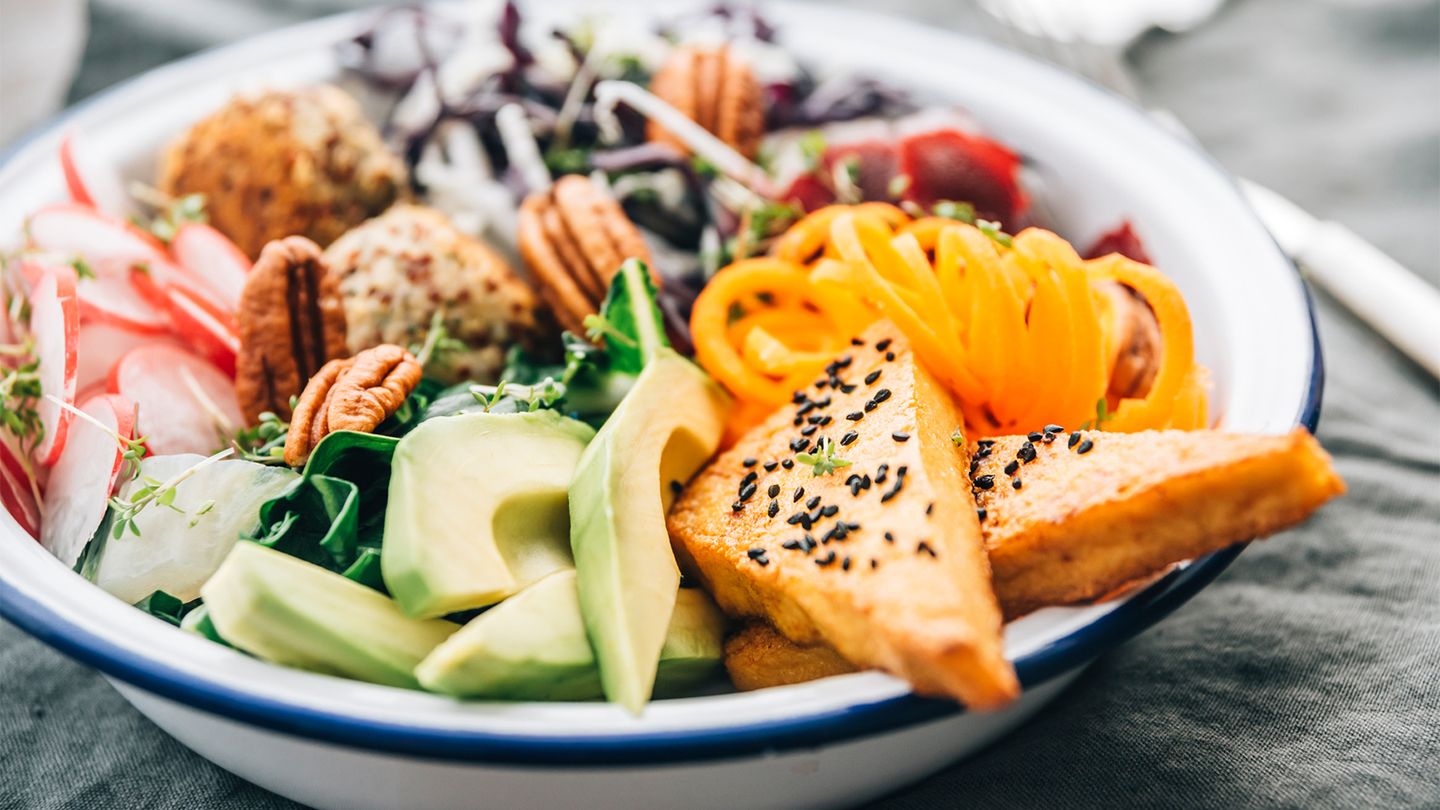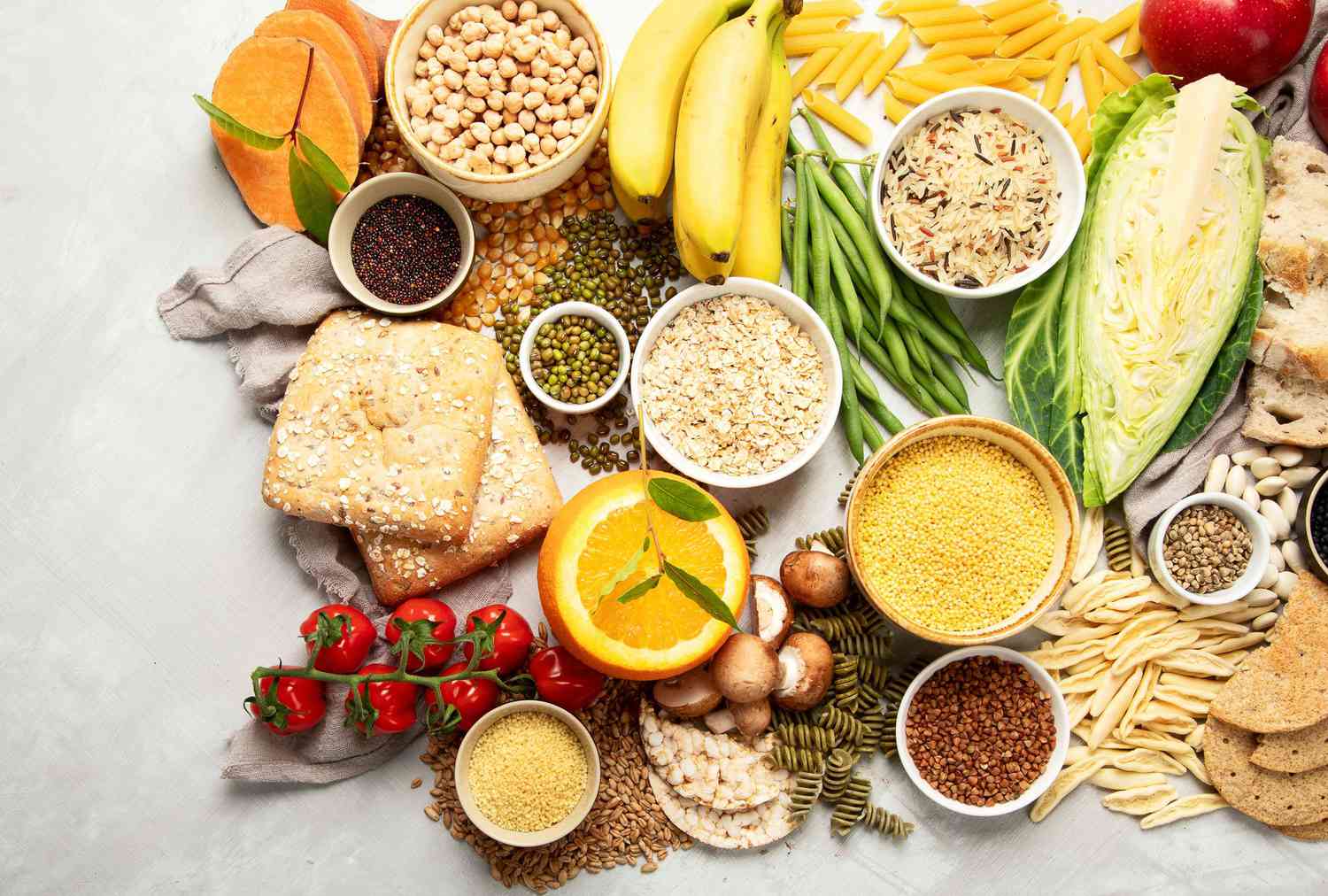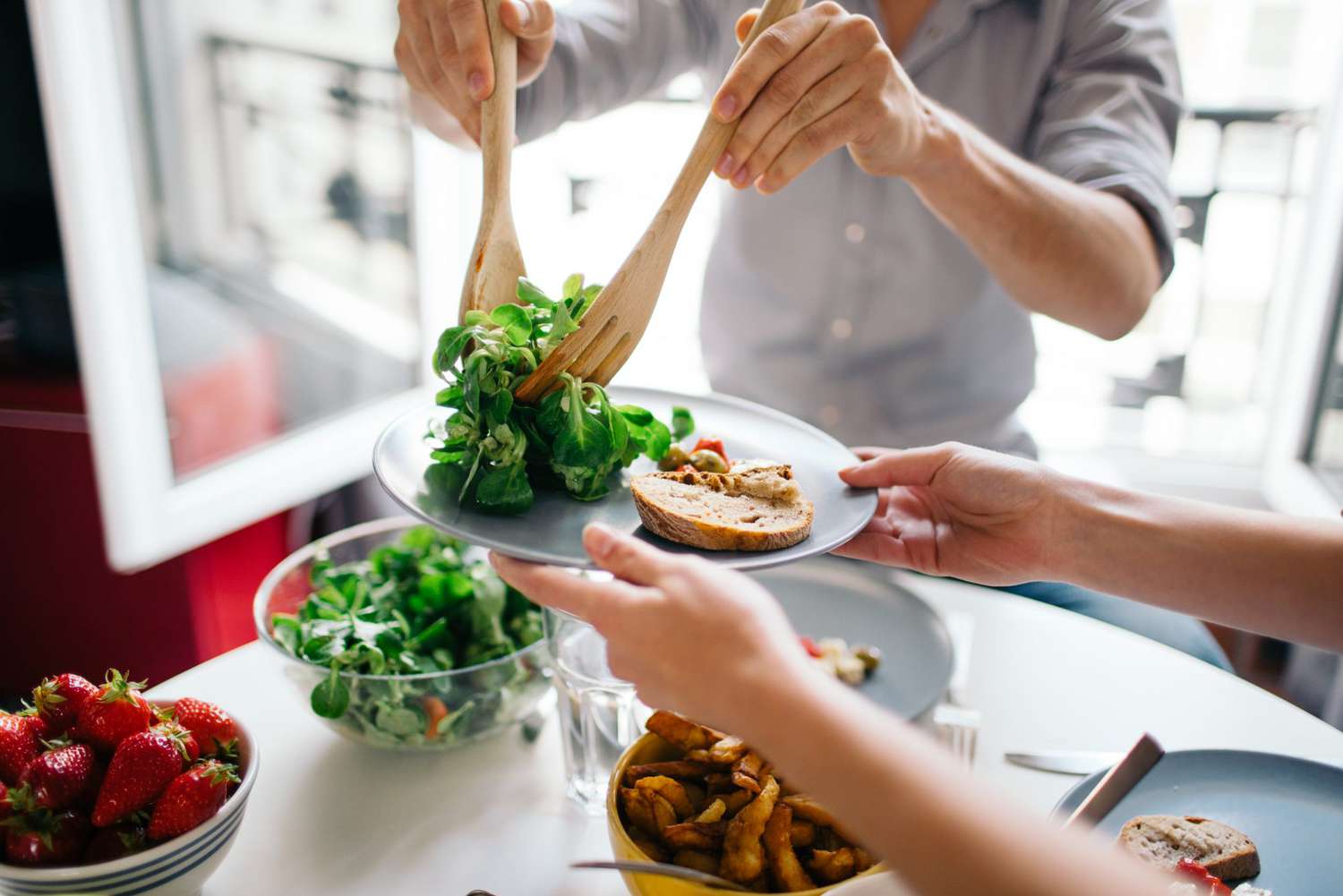Eating enough protein is essential for maintaining energy levels and supporting your body’s needs. Incorporating high-protein foods into your meals can help you feel full longer and reduce cravings, making it easier to manage your weight. Whether you’re looking to build muscle, stay active, or simply feel better, focusing on protein-rich options is a smart choice.
High-protein meals can be delicious and easy to prepare. You don’t have to rely on heavy meats to meet your protein needs. Many plant-based foods also provide excellent sources of protein while offering healthy fats and fiber, which are great for overall wellbeing.
As you explore high-protein meal ideas, you’ll learn how to optimize your diet to fit your lifestyle. From breakfast to dinner, including a variety of protein sources can enhance flavor and nutrition, helping you achieve your dietary goals.
Key Takeaways
- Protein helps you maintain energy levels and reduces cravings.
- A variety of high-protein foods supports a balanced diet.
- Optimizing protein intake can aid in weight management and overall health.
Optimizing Protein in Your Diet
To maintain a balanced diet, it’s essential to understand the role of protein and how to meet your needs effectively. This section explores the significance of protein, how to determine your daily requirements, and the importance of balancing other nutrients for overall health.
Understanding Protein and Its Importance
Protein is crucial for many body functions, including building and repairing tissues. It plays a major role in creating enzymes and hormones, which are vital for metabolism.
Protein is made up of amino acids, some of which are essential. This means your body cannot produce them, so you must obtain them from food. Quality protein sources include:
- Lean meats (chicken, turkey)
- Fish (salmon, tuna)
- Dairy (Greek yogurt, cheese)
- Legumes (beans, lentils)
- Nuts and seeds (almonds, chia seeds)
Eating a variety of these foods will help ensure you get all the essential amino acids your body requires.
Meeting Your Daily Protein Needs
To effectively meet your protein needs, it’s helpful to know how much you should consume daily. A common guideline is to aim for 0.8 grams of protein per kilogram of body weight. For example, if you weigh 70 kg, your target would be around 56 grams of protein per day.
For those who are physically active or looking to build muscle mass, this number may be higher, ranging from 1.2 to 2.2 grams per kilogram. To track your intake:
- Plan your meals around protein sources.
- Use protein-rich snacks like Greek yogurt or peanuts.
- Incorporate diverse protein sources to enhance flavor and nutrition.
Balancing Macronutrients for Optimal Health
While protein is important, balancing it with carbohydrates and fats is essential for your overall health. Each macronutrient plays a role in your metabolism and energy levels.
- Carbohydrates are crucial for energy, especially if you are active.
- Healthy fats support heart health and help absorb certain vitamins.
Aim for a diet that includes:
- 20-30% of total calories from protein
- 45-65% from carbohydrates
- 20-35% from fats
Incorporating lean proteins with fiber-rich vegetables can help you feel full while providing essential nutrients. Keeping a balanced macronutrient ratio supports muscle maintenance, fat loss, and overall well-being.
High Protein Foods for Meal Planning
When planning high-protein meals, it’s essential to include a variety of protein sources. This adds not only nutrition but also flavor and texture to your dishes. Here are some key food categories to consider.
Meat and Poultry Essentials
Meat and poultry are prime sources of protein. Options like chicken, turkey, beef, and pork are versatile and easy to cook.
- Chicken: Skinless chicken breast is lean and offers about 31 grams of protein per 100 grams. It’s great for grilling, baking, or stir-frying.
- Turkey: Similar to chicken, turkey is low in fat and high in protein, with about 29 grams per 100 grams. It works well in burgers or casseroles.
- Beef: Lean cuts like sirloin provide around 26 grams of protein per 100 grams. Use it in roasts, tacos, or stir-fries.
- Pork: Lean pork tenderloin has about 22 grams of protein per 100 grams and is perfect for roasting or slow-cooking.
By incorporating these meats, you can easily boost your protein intake.
Seafood Selections
Seafood is not only delicious but also rich in protein and healthy fats. Common choices include salmon, tuna, and shrimp.
- Salmon: This fatty fish offers about 25 grams of protein per 100 grams, along with omega-3 fatty acids. Enjoy it grilled, baked, or as sushi.
- Tuna: A top choice for quick meals, canned tuna packs around 30 grams of protein per 100 grams. It’s perfect for salads or sandwiches.
- Shrimp: Low in calories and high in protein, shrimp contains about 24 grams per 100 grams. You can sauté, grill, or add it to pastas.
Including seafood in your meal prep can diversify your protein sources and enhance your diet.
Plant-Based Protein Powerhouses
For those seeking plant-based options, legumes, nuts, and grains are excellent high-protein foods.
- Legumes: Foods like lentils and chickpeas are protein-rich, with lentils providing about 9 grams of protein per cooked half-cup. Use them in soups or salads.
- Quinoa: A complete protein, quinoa offers about 8 grams of protein per cooked cup. It serves as a great base for salads or bowls.
- Tofu: This versatile soy product contains around 10 grams of protein per 100 grams. It absorbs flavors well, making it perfect for stir-fries or scrambles.
- Nuts and Seeds: Almonds and chia seeds provide protein while adding healthy fats. A quarter cup of almonds offers about 8 grams of protein.
These plant-based options can easily complement your meal planning, ensuring you meet your protein needs while enjoying various flavors and textures.
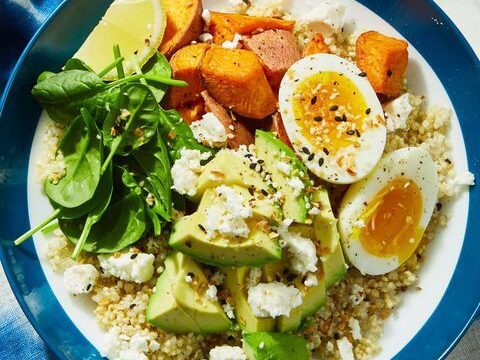
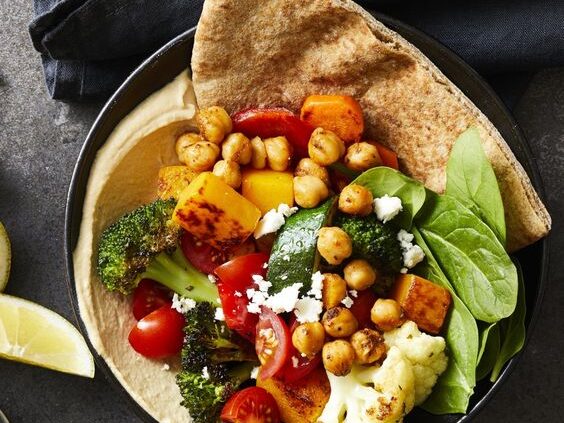
Innovative High-Protein Meal Ideas
Finding new ways to enjoy high-protein meals can make healthy eating easier and more enjoyable. Here are diverse options that incorporate various protein sources. Each meal provides essential nutrients and satisfying flavors.
Protein-Rich Breakfasts
Start your day with a protein boost. Eggs are a classic choice. You can prepare them scrambled, poached, or in an omelet with vegetables. One omelet with three eggs offers about 18 grams of protein.
Another great option is Greek yogurt. It is thicker than regular yogurt and contains about 20 grams of protein per serving. Top it with peanut butter and some berries for added flavor and nutrients.
Consider making a smoothie with protein powder, spinach, and frozen fruits. This quick breakfast gives you protein and vitamins in just minutes.
Satisfying Protein-Packed Lunches
For lunch, try a chicken fajita wrap. Fill a whole grain wrap with grilled chicken, bell peppers, and onions. This meal can provide up to 30 grams of protein, depending on how much chicken you use.
Another option is a chopped salad with black beans. Load it with your favorite vegetables and a protein-rich dressing. This combination keeps you full and adds fiber to your meal.
Chickpea salad is also a tasty choice. Mix canned chickpeas, cucumbers, tomatoes, and feta cheese. Chickpeas have about 15 grams of protein per cup, making this salad a hearty vegetarian option.
Hearty High-Protein Dinners
For dinner, consider making fish tacos. Use grilled fish like salmon or tilapia. Add a cabbage slaw and some avocado for a nutritious twist. These tacos can offer around 25 grams of protein per serving.
You can also enjoy cottage cheese with roasted vegetables. This dish is rich in protein and very filling. One cup of cottage cheese provides about 25 grams of protein.
Another comforting meal is chicken stir-fry. Stir-fry pieces of chicken with your favorite vegetables and serve over brown rice. This meal not only satisfies your hunger but also supports your protein needs for the day.
The Role of Protein in Weight Management and Overall Wellbeing
Protein plays a vital role in weight management. It helps you feel full longer, which can reduce cravings and prevent overeating. Including lean proteins in your meals can support this process.
Lean Protein Sources:
- Skinless chicken or turkey
- Lean beef or pork
- Fish like halibut and canned tuna
- Plant-based options such as soy products and legumes
High-protein foods can boost your metabolism. They require more energy for digestion compared to carbohydrates and fats. This means your body burns more calories simply by processing protein.
Adding complex carbohydrates like whole grains, oats, and fiber-rich foods, such as broccoli and peas, can enhance this effect. Together, they provide energy and help stabilize blood sugar levels.
Incorporating healthy fats, such as almonds and pumpkin seeds, into your diet is also important. They support nutrient absorption and can improve overall wellbeing.
For those looking for convenience, whey protein powder can be a quick way to increase protein intake. It’s useful for shakes or baking.
Sample High-Protein Meal Ideas:
- Greek yogurt with sun-dried tomatoes and almonds
- Quinoa salad with vegetables and canned tuna
- Stir-fried cauliflower with lean beef and peas
By focusing on these protein sources, you can create meals that support your weight management goals and overall health.
Frequently Asked Questions
You may have questions about high-protein foods and how to incorporate them into your meals. This section addresses common inquiries related to vegetarian options, meal plans for weight loss, and foods rich in protein for muscle building.
What are the best high-protein foods for vegetarians?
For vegetarians, some of the best high-protein foods include lentils, chickpeas, quinoa, tofu, tempeh, and dairy products like Greek yogurt. Nuts and seeds are also great choices, providing both protein and healthy fats.
Can you provide a 7-day high-protein diet plan for weight loss?
A 7-day high-protein diet plan can include meals like scrambled eggs with spinach for breakfast, grilled chicken salad for lunch, and baked tofu stir-fry for dinner. Incorporate snacks like Greek yogurt or mixed nuts throughout the day to meet protein goals.
What are the top protein-rich foods for muscle building?
Top protein-rich foods for muscle building include lean meats like chicken and turkey, fish like salmon and tuna, eggs, dairy products like cottage cheese, and plant-based options like beans and lentils. These foods can help support muscle growth and recovery.
Which foods offer the highest amount of protein per 100 grams?
Foods that offer the highest protein per 100 grams include cooked clams at around 21.8 grams, shrimp at about 20.4 grams, and chicken breast which can provide around 31 grams. Egg whites and certain types of fish, like tuna, are also excellent sources.
What is a good list of high-protein foods to consider for weight loss?
A good list of high-protein foods for weight loss includes lean meats, eggs, fish, low-fat dairy, legumes, and nuts. Adding these foods to your diet can increase satiety and help with managing overall calorie intake.
How can one incorporate high-protein foods into daily meals for weight management?
To incorporate high-protein foods into daily meals, add protein-rich snacks like hard-boiled eggs or yogurt between meals. Include a source of protein with every meal, such as beans in salads, chicken in wraps, or nuts in oatmeal to create balanced plates.
